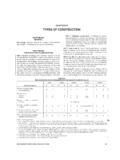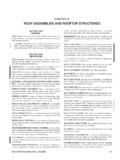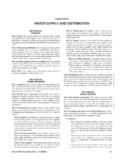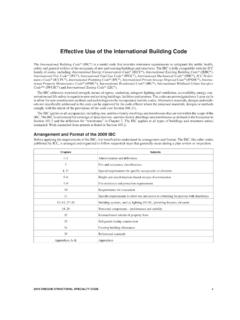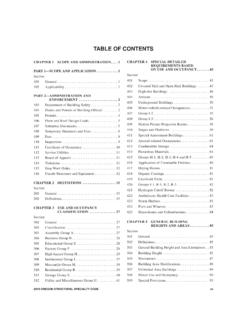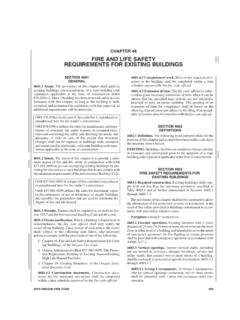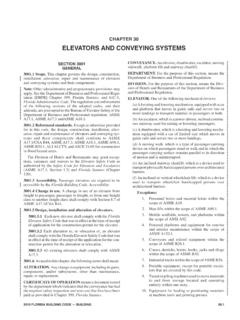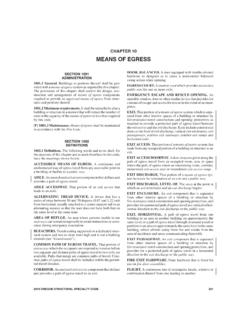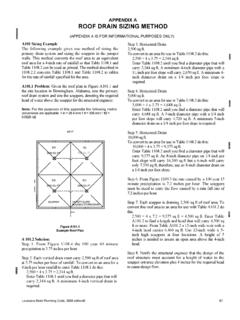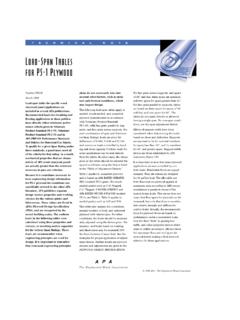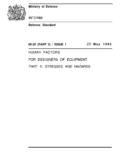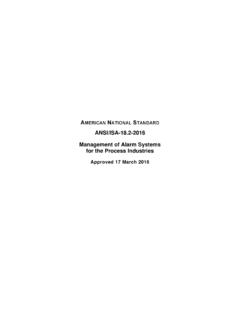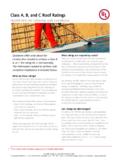Transcription of PS 2-10, Performance Standard for Wood-Based …
1 PS 2-10 Performance Standard for Wood-Based structural -Use PanelsEffective Date June 1, 2011 Reproduced from copy furnished by the Offi ce of standards Services, National Institute of standards and Technology VOLUNTARY PRODUCT STANDARDE ngineered wood products are a good choice for the environment. They are manufactured for years of trouble-free, dependable use. They help reduce waste by decreasing disposal costs and product damage. Wood is a renewable resource that is easily manufactured into a variety ofviable few facts about wood. We re growing more wood every day. Forests fully cover one-third of the United States and one-half of Canada s land mass.
2 American landowners plant more than two billion trees every year. In addition, millions of trees seed naturally. The forest products industry, which comprises about 15 percent of forestland ownership, is responsible for 41 percent of replanted forest acreage. That works out to more than one billion trees a year, or about three million trees planted every day. This high rate of replanting accounts for the fact that each year, 27 percent more timber is grown than is harvested. Canada s replanting record shows a fourfold increase in the number of trees planted between 1975 and 1990. Life Cycle Assessment shows wood is a green building product.
3 A 2004 Consortium for Research on Renewable Industrial Materials (CORRIM) study gave scientific validation to the strength of wood as a green building product. In examining building products life cycles from extraction of the raw material to demolition of the building at the end of its long lifespan CORRIM found that wood was better for the environment than steel or concrete in terms of embodied energy, global warming potential, air emissions, water emissions and solid waste production. For the complete details of the report, visit Manufacturing wood is energy efficient. Wood products made up 47 percent of all industrial raw materials manufactured in the United States, yet consumed only 4 percent of the energy needed to manufacture all industrial raw materials, according to a 1987 study.
4 Good news for a healthy planet. For every ton of wood grown, a young forest produces tons of oxygen and absorbs tons of carbon : It s the natural choice for the environment, for design and for strong, lasting Natural Choice Percent of Percent ofMaterial Production Energy UseWood 47 4 Steel 23 48 Aluminum 2 8 2011 APA THE ENGINEERED WOOD ASSOCIATION ALL RIGHTS RESERVED. ANY COPYING, MODIFICATION, DISTRIBUTION OR OTHER USE OF THIS PUBLICATION OTHER THAN AS EXPRESSLY AUTHORIZED BY APA IS PROHIBITED BY THE COPYRIGHT OF COMMERCE (DOC) VOLUNTARY PRODUCT STANDARDSDOC Voluntary Product standards are developed under procedures published by the Department of Commerce in Title 15 Code of Federal Regulations Part 10, Procedures for the Development of Voluntary Product standards .
5 The pur-pose of these standards is to establish nationally recognized requirements for products and to provide all concerned interests with a basis for common understanding of the characteristics of the products. The National Institute of standards and Technology (NIST) administers the Voluntary Product standards program on a reimbursable OF NISTThe role of NIST in the establishment of a DOC Voluntary Product Standard is to act as an unbiased coordinator in the development of the Standard , provide editorial assistance in the preparation of the Standard , supply such assis-tance and review as is required to assure the technical soundness of the Standard , and seek satisfactory adjustment of valid points of disagreement.
6 NIST also determines compliance with the criteria of the Department s procedures and publishes the Standard as a public , distributors, users, consumers, and other interested groups contribute to the establishment of Voluntary Product standards . These groups initiate and participate in the development of the standards , provide technical or other counsel as appropriate, promote the use of and support for the standards , and assist in keeping them current with respect to advancing technology and marketing OF VOLUNTARY PRODUCT STANDARDSThe use of DOC Voluntary Product standards is voluntary. NIST has no regulatory power in the enforcement of their provisions; however, since the standards represent a consensus of all interested groups, their provisions are likely to become established as trade customs.
7 In addition, when a DOC Voluntary Product Standard is made part of a legal document, such as a sales contract or code, compliance with the Standard is benefits derived from a DOC Voluntary Product Standard are in direct proportion to their general recognition and actual use. Producers and distributors whose products meet the requirements of a DOC Voluntary Product Standard may refer to the Standard in advertising and on labels to promote greater public understanding for con-fidence in their products. At times, purchasers may order products conforming to the requirements of a DOC Voluntary Product copies of DOC Voluntary Product standards or more information concerning the development and use of these standards , contact the standards Services Division, National Institute of standards and Technology, 100 Bureau Drive, MS 2150, Gaithersburg, MD 20899-2150; Standard covers Performance requirements, adhesive bond Performance , panel construction and workmanship, dimensions and tolerances, marking, and moisture content of structural -use panels.
8 structural -use panels include structural plywood, oriented strand board (OSB), other mat-formed panels and composite panels. The Standard classi-fies panels by bond classification, span rating, Performance category and grade. It provides test methods, a glossary of trade terms and definitions, and a quality certification program whereby agencies inspect, sample, and test products for conformance to this Standard . Information regarding industry practices for reinspection, a qualification flowchart, history of the Standard , labeling and environmental attributes are provided in nonmandatory bond classification; certification; construction sheathing; structural -use panel; dimensions and tolerances; marking; moisture content; oriented strand board; OSB; panel construction; Performance requirements; span rating; mat-formed panel; Performance category; structural plywood; test methods; voluntary Standard ; waferboard; Wood-Based SCOPE.
9 12 TERMINOLOGY..13 REFERENCE PUBLICATIONS..44 CLASSIFICATION .. General ..4 Bond classification ..4 Grade..4 Span Rating ..5 Performance Category ..55 REQUIREMENTS .. General .. General Requirements ..5 Dimensional tolerances and squareness of panels ..5 Wood materials ..6 Design and construction .. Performance requirements ..6 structural Performance ..6 Physical properties ..7 Bond Performance .
10 10 Adhesive Performance .. Moisture content ..136 QUALIFICATION TESTING AND MILL SPECIFICATION .. General .. Qualification testing..13 General ..13 structural Performance ..14 Dimensional stability.. 15 Bond Performance ..16 Adhesive Performance .. Mill specification ..18 Panel construction..18 Mechanical properties ..19 Physical properties ..20 Adhesive bond properties ..207 TEST METHODS.. Concentrated static and impact load test.
